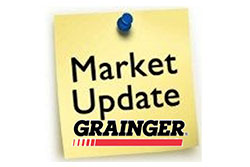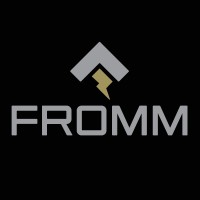Digital Distributor Starts with eCommerce Product Content
 The term “digital distributor” is starting to be used more repeatedly. Granted it can be a consultant’s way to drum up business but it’s becoming a term used to express the further reaching impact of doing business digitally and recognition that not all business is going to be done via “hunt and peck” clicking on websites.
The term “digital distributor” is starting to be used more repeatedly. Granted it can be a consultant’s way to drum up business but it’s becoming a term used to express the further reaching impact of doing business digitally and recognition that not all business is going to be done via “hunt and peck” clicking on websites.
Much of it, however, emanates from the need for quality data. While there are many definitions of the term “quality”, in essence it comes down to two things.
- First is the transactional aspect of the information accurate? This is critical as it is needed to populate ERP systems and for daily transactions within the channel. It’s also important for standardization (how many ways does “black” really need to be spelled?) as well as elements of eCommerce (i.e. size and weight for shipping information.)
- Second, does the content that customers / prospects view on a website help them make product decisions? This we could classify as “eCommerce content / eCommerce product data”. It gets into “what is this product” and, from a manufacturer viewpoint answers “why my product is the right solution?” Since the advent of eCommerce in the electrical industry it has been felt that this information needed to be “standardized”, fit into centralized databases and then disseminated (syndicated) to distributor websites. The “one to many” model was deemed “easier and more cost-effective” for manufacturers (and the industry.)
At the NAED South Central, we heard from a number of manufacturers that they are getting more requests from distributors to have eCommerce data shared directly with them. Additionally we heard that manufacturers desire to add more application information and marketing content to accompany their content on some, or all, distributor sites (and that they are doing for Amazon and others). At the same time, manufacturers, and distributors who are moving down the eCommerce path, remain concerned about product content being the same on “all” websites (the “commodity concern”).
And then we have the “digital distributor”.
We’re seeing services to differentiate distribution digitally in the areas of:
- Sales enablement
- Marketing enablement and co-branding
- Supply chain integration
- Showcasing selected suppliers and selected supplier functionality on distributor sites
- Collaborative advertising
- Social marketing
- CRM / marketing automation systems
- Joint marketing
- Targeted elearning systems
- Integration of frequent buyer programs into online platforms
- Mobility
- Direct connectivity to customer estimating / procurement systems
- eMarketplaces
And more.
Distributors and manufacturers are starting to define the “digital distributor”, are investing in it and investing into the applicable staff.
(As an aside, as a distributor you do not have to invest in all of this, or maybe any of this, to survive. Much depends upon your goals and your strategy to achieve them. You can prioritize and invest in some, or none. Consider your horizon, customers and resources before jumping. (and yes, we can help!)
The Impact … Tighter Manufacturer Distributor Relations for Some … Selectivity
The impact may be more selectivity in services / benefits that manufacturers offer to different distributors based upon “commitment”, thereby generating greater distributor loyalty and growth potential. Manufacturers investing in these tools will more discretely segment their customer base.
The investment dollars will come from a reallocation of current channel investments for many. Manufacturers will define this as “investing in their channel.” Distributors will receive “differentiated services” based upon their support level (sales volume and/or profitability.)
eCommerce product content will be one of these differentiators.
While industry entities and third party resources can offer “data warehouses” with information that, essentially, is entry level (our term), a recent article from Salsify, a company that helps retailers / distributors provide “online product experiences” highlights initiatives being undertaken at Amazon and Walmart. The feedback we hear from distributors and end-users is that Amazon Business (and Grainger) have the best sites and content. In Amazon’s case we can definitely say “manufacturers provide the content”.
Salsify is a Walmart content service provider and, in the posting, states:
“Walmart is currently the only retailer that has an API for item setup and content refresh for 1P, its marketplace, and rich media, as well as full catalog submissions. Working with a Walmart content service provider (CSP) like Salsify can help you act quickly to make improvements to the product pages on Walmart.com today as well as expand your market share with the world’s biggest retailer.”
The items in bolded italics, which we added, are the key elements. It shows manufacturers controlling their content on a retailer (distributor) website to differentiate that reseller. Should Graybar want, or receive, the same content that is an a “small distributor website” or a “less than $100M distributor website”?
With electrical manufacturers getting more direct requests for content from distributors AND wanting to distribute more robust / enriched product information, the “Salsify experience” or “a need to enhance the online product experience” is the next evolution to enable digital distribution.
Feedback from our two recent state of eCommerce studies (from a distributor perspective and a contractor / end-user perspective) reinforce what is needed and the need for better content.
At the upcoming NAED National meeting (click here for the schedule), the NAED Manufacturer Advisory Council is going to share insights into issues relating to product content that are important to manufacturers AND distributors. Every company attending the conference should have at least one person attend this meeting to report back … and if you’re not attending the conference but are in the Chicagoland area, ask NAED if you can attend this Saturday afternoon session. For those who attend, to support the Manufacturer Advisory Council, we’re also offering a complimentary copy of our two reports if you approach us after the meeting.
Over the years IDEA has sought evolved the number of attributes for manufacturers to populate, however, anticipating individual and industry needs is “challenging”, let alone getting everyone to populate and maintain their information. Other providers have their methodologies. The one thing we do know is that manufacturers are the keeper of their content and know, defined as how they market themselves and invest in themselves, what is important to sell their product. Unleashing this information and utilizing it to differentiate themselves (or them if you are one of their distributors) can be important (or perhaps they provide different levels of information to different distributors?)
Models will evolve. Adhering to pre-defined standards from 3-5 years ago is “ancient” in today’s digital world. The digital distributor model will require flexibility, ongoing investment, infrastructures that can adapt and distribution (and manufacturer) willingness to adopt / adapt concepts from other industries. Customers are consuming varying amounts of information digitally. How you adapt / adopt will be core to achieving your goals and strategy.























